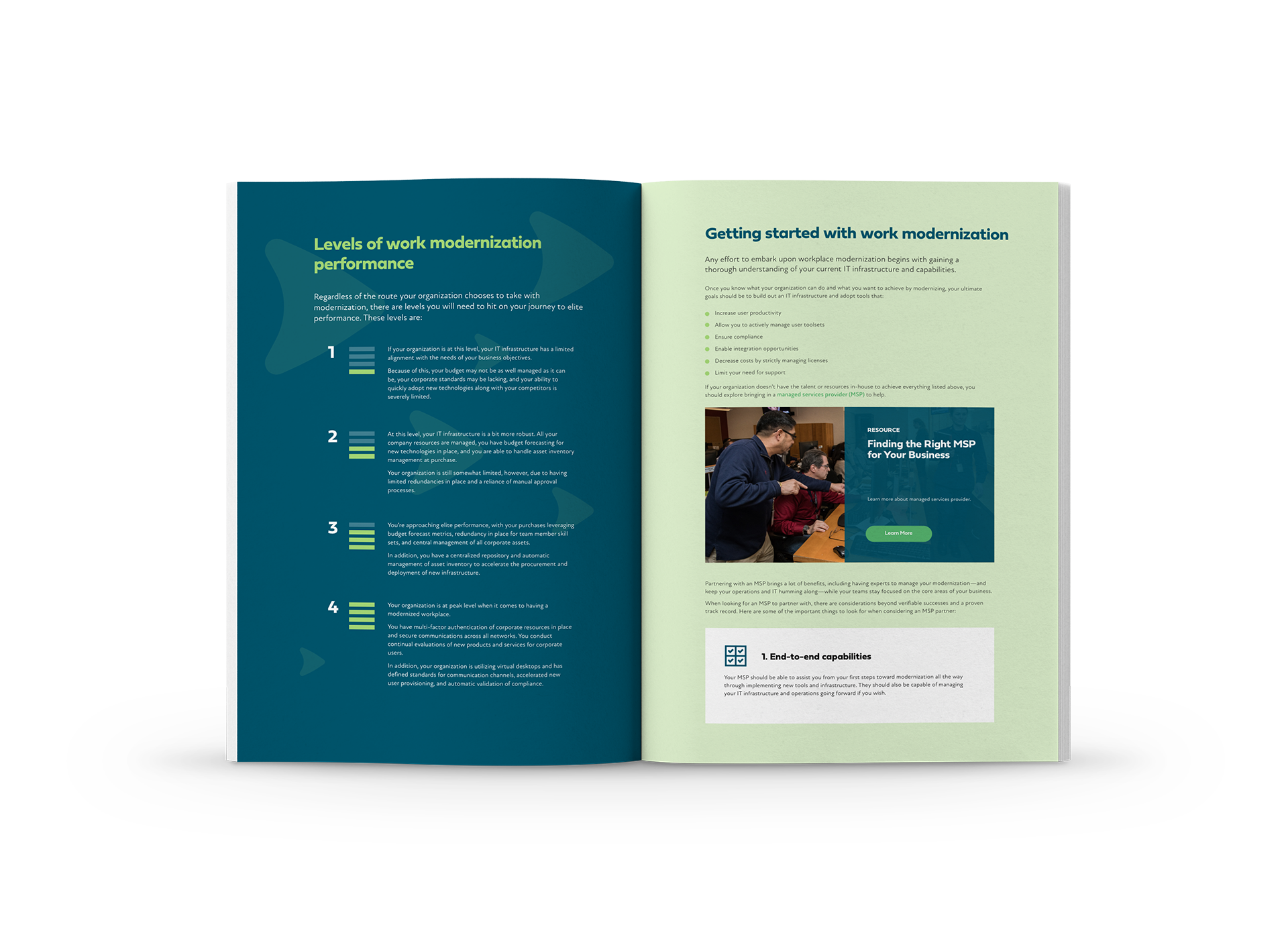Speaker 1 (00:09):
Let’s talk about how having a partner like Redapt allows companies to quickly react to and implement new technologies, and build better processes as they grow.
Rick Koller (00:18):
We work with all of our clients and determine where their business really is headed. We're looking for issues they're running into, ways they could be more efficient, and digging with their dev teams to discover opportunities to make things more efficient on their side. We're not only an MSP. We're the point into the spear wherein we can tie you into other disciplines across the Redapt ecosystem that allow for rapid transformation. We have a practice in AI and ML. We have a solid DevOps crew, application analytics, etc. We're always looking for ways we can help our customers.
Speaker 1 (01:27):
That's great. So, there are lots of MSP options out there. What makes Redapt unique? Why do customers love working with Redapt?
Rick Koller (01:40):
One of the things I find to be really compelling for many of our clients is that we have the breadth and depth along a variety of different cloud technologies and providers. We have an amazing team focused on the technology ecosystem that lives on top of our cloud providers in a variety of different marketplaces. From my perspective, we're not just an MSP. Everyone has an MSP. We bring so much more to the table from the perspective of people who will literally say, "I'll weigh into your code to determine what's best and where we can help you migrate, or become more mature."
Speaker 1 (02:31):
Nathan, what is Redapt currently doing for customers? What are you seeing?
Nathan Spear (02:37):
From a technical account management customer success management perspective, one of the big value adds is that I'm monitoring their spend. I also make sure I'm aligned with their long-term goals and their projects. We have regular quarterly touch points and, often, much more frequently. I have customers I meet with every day. We want to make sure we're integrated in their workflows, so there is that easy handoff in between the different practices. We have an application development team and an analytics team. We have cloud engineers at the lift and shift migrations. We also have DevOps engineers also.
We even have customers who move between clouds. One of my customers right now is moving from one of the Big Three to another of the Big Three, in order to realize some cost savings we've identified. There are other deliverables, cost governance, the monitoring and recommendations that come from those tools, support ticket, incident reporting, and root cause analysis. When I review all the tickets that have gone through this system in the past period, I analyze them and bring them to the customer. This is how we've set this to not be an issue in the future. Also, there’s service level agreement performance. We have different SLAs. It's very important to us that we meet those SLAs with our customers. If we have any breaches, and they're rare, we report back to the customer on how we rectified them.
Speaker 1 (04:38):
Rick, we've talked a little bit about cloud governance. Can you tell us what that is and explain why it's important?
Rick Koller (04:48):
Cloud governance is a bit more than just cost governance. If you're going to manage anything, you have to understand what the costs are, along with exactly what you're working with. We approach it from the perspective of, “Of course you know your costs.” We have expanded that into fully understanding what your security footprint looks like, as well through compliance, and vulnerability scanning. From that holistic approach, we were able to provide a real picture as to what each of our clients are really looking at. That's key to the way we focus on each and every one of our clients.
Speaker 1 (05:45):
Nathan, can you talk about some use cases for savings or unexpected spikes?
Nathan Spear (05:54):
I can give an example for each of the clouds. From a GCP perspective, the customers on that platform all automatically get sustained-use discounts. That's an easy first lever to pull. There's a second lever called continuous use discounts, which are for machines and the services they leave on, basically 24/7. The built-in tools in the platform are a little bit vague and don't go into depth. They make it harder to divide it out if the customer has a particular product that's made up of projects, or the way they've organized their business on that cloud. In the case of GCP, my teammates and I do a manual analysis where we use the power of Excel and pivot tables.
We're able to pull the data from the cost and usage reports from the cloud provider, then develop our own solution. We've been doing this for over a year, improving our processes as we go. Azure's a different type of savings. They use reserved instances, and there are a couple ways to accommodate the cost savings. You can look at the last seven days and the last 30 days. You can look at it by account. You can look at it by region. Generally, when I'm working on an Azure cost optimization project, I'm thinking about what best fits from the customer's use case, then present reporting we can action.
AWS is the biggest and most complex of the three. Many customers have been using reserved instances, which were instituted in the mid 2000s. They had to develop a marketplace at some point, because customers had committed to a certain amount of spend per region, per instance type. It's very complicated to administer. In fact, large companies have people where their full-time job is managing the reservations, the reserve instances. AWS also has a newer product called savings plans. We balance that out. We have ways for them to use reserve instances through a partnership we have in the distribution channel, making it simple. We have the ability to help them with the couponing of savings plans. Then, with one of my big customers, I was even able to get them a higher discount with another program we offered that required scoping and meeting. It required migrating workloads in, which they did have—they had a number of data centers they hadn't moved to the cloud yet.
The point is that each of the clouds is different. Each of them requires a different set of tools, but it comes down to analyzing what's best for the customer. From an unexpected spike case that speaks more to having the right monitoring, and policies analyzing the spend in place. You get good at that through trial and error, rinse and repeat. You're iterating that. It's hard to know exactly how a customer is going to spend their money. They often don't know exactly how they're going to spend it, but I keep a close eye on it, and I'm able to change the way I'm watching, then who I'm reporting to.
Speaker 1 (10:22):
Rick, can you talk a bit about some of the different ways you support your clients? If we're thinking about the continuum of services all the way from startup to larger companies, what are some ways that folks partner with you and the services you provide?
Rick Koller (10:41):
There are a variety of ways in which we've supported our services clients, many of whom are working with us through resale channels. Some are resale channel plus, standard and premium support. Premium support is us digging much farther into how each and every one of these customers are looking to support their own clients, digging into their application infrastructure, supporting that, along with supporting any of their infrastructure needs as a base. On top of that, we provide cloud governance for every one of our clients.
In some special cases, we're very happy to dig into some one-off monitoring requests. We're working with one client today who wants us to be hands-on-keyboard, looking at how their storefront works from hour to hour, to ensure that their storefront works over the holidays. We run the breadth of a variety of different industries, from healthcare through e-commerce, and everything in between. We're happy to help in any way possible. 99% of the time, we find a way to provide additional, unexpected value from the very first day.













